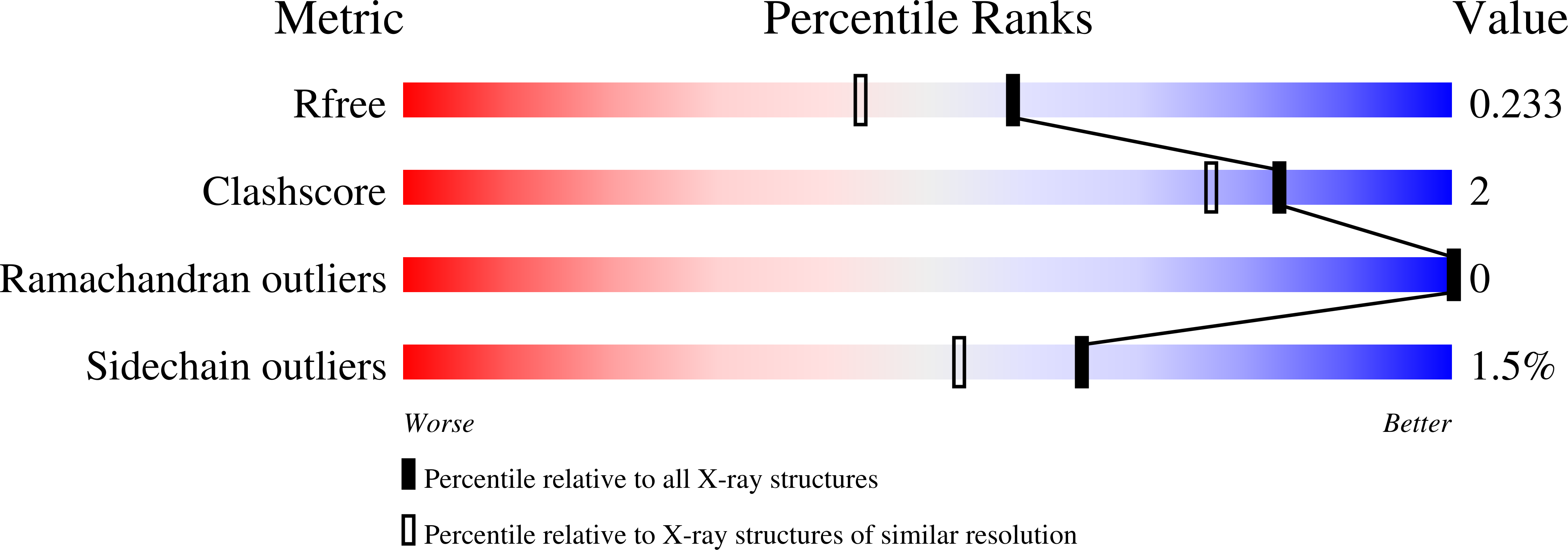Disease-Associated Substitutions in the Filamin B Actin Binding Domain Confer Enhanced Actin Binding Affinity in the Absence of Major Structural Disturbance: Insights from the Crystal Structures of Filamin B Actin Binding Domains.
Sawyer, G.M., Clark, A.R., Robertson, S.P., Sutherland-Smith, A.J.(2009) J Mol Biol 390: 1030
- PubMed: 19505475
- DOI: https://doi.org/10.1016/j.jmb.2009.06.009
- Primary Citation of Related Structures:
2WA5, 2WA6, 2WA7 - PubMed Abstract:
Missense mutations in filamin B (FLNB) are associated with the autosomal dominant atelosteogenesis (AO) and the Larsen group of skeletal malformation disorders. These mutations cluster in particular FLNB protein domains and act in a presumptive gain-of-function mechanism. In contrast the loss-of-function disorder, spondylocarpotarsal synostosis syndrome, is characterised by the complete absence of FLNB. One cluster of AO missense mutations is found within the second of two calponin homology (CH) domains that create a functional actin-binding domain (ABD). This N-terminal ABD is required for filamin F-actin crosslinking activity, a crucial aspect of filamin's role of integrating cell-signalling events with cellular scaffolding and mechanoprotection. This study characterises the wild type FLNB ABD and investigates the effects of two disease-associated mutations on the structure and function of the FLNB ABD that could explain a gain-of-function mechanism for the AO diseases. We have determined high-resolution X-ray crystal structures of the human filamin B wild type ABD, plus W148R and M202V mutants. All three structures display the classic compact monomeric conformation for the ABD with the CH1 and CH2 domains in close contact. The conservation of tertiary structure in the presence of these mutations shows that the compact ABD conformation is stable to the sequence substitutions. In solution the mutant ABDs display reduced melting temperatures (by 6-7 degrees C) as determined by differential scanning fluorimetry. Characterisation of the wild type and mutant ABD F-actin binding activities via co-sedimentation assays shows that the mutant FLNB ABDs have increased F-actin binding affinities, with dissociation constants of 2.0 microM (W148R) and 0.56 microM (M202V), compared to the wild type ABD K(d) of 7.0 microM. The increased F-actin binding affinity of the mutants presents a biochemical mechanism that differentiates the autosomal dominant gain-of-function FLNB disorders from those that arise through the complete loss of FLNB protein.
Organizational Affiliation:
Institute of Molecular BioSciences, Massey University, Palmerston North, New Zealand.
















